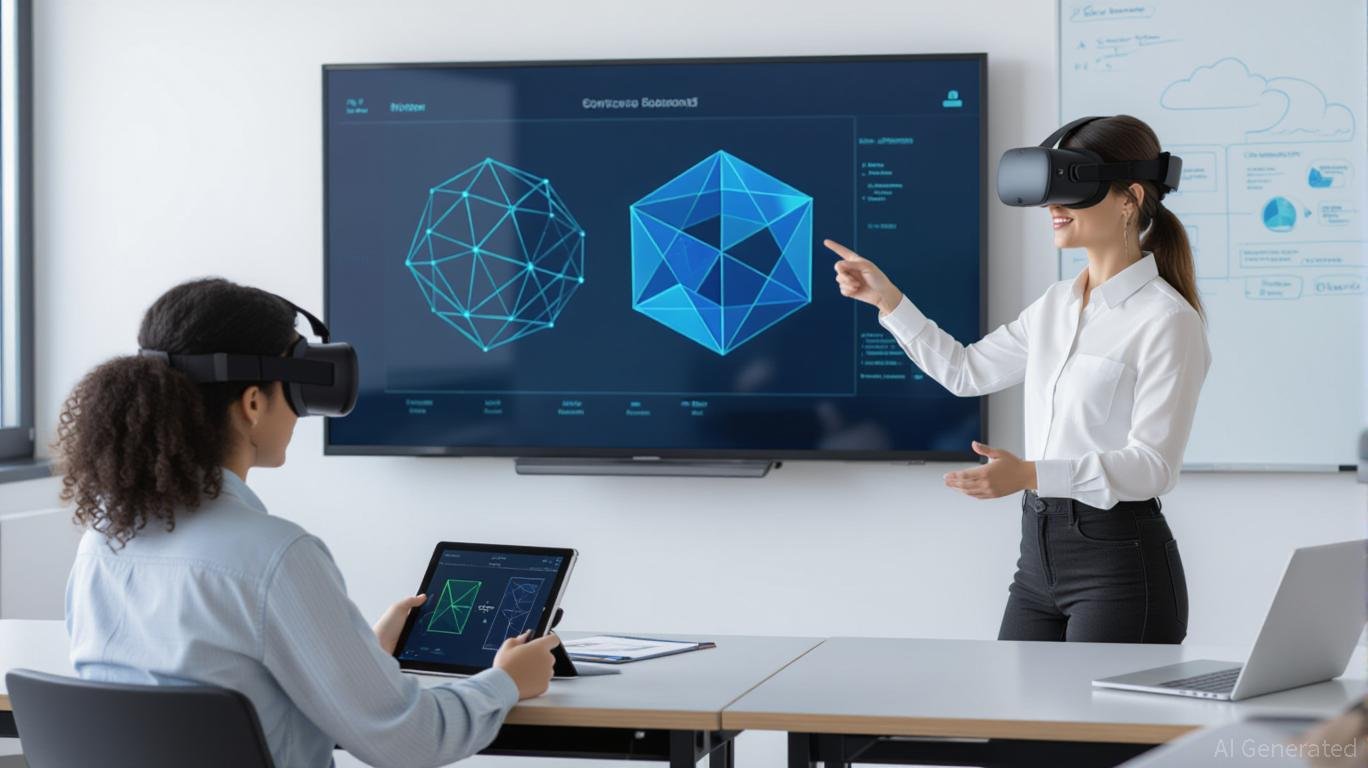Ottawa, Sept. 01, 2025 (GLOBE NEWSWIRE) — The global AI in food and beverages market size stood at USD 11.75 billion in 2024 and is predicted to increase form USD 16.36 billion in 2025 to around USD 320.94 billion by 2034, expanding at a CAGR of 39.2% from 2025 to 2034, according to study published by Towards FnB, a sister firm of Precedence Research.
The market is burgeoning in recent times as advanced technology helps in optimizing supply chain, aiding in personalized nutrition, and helping the food and beverage industry in the form of smart packaging and manufacturing.
Note: This report is readily available for immediate delivery. We can review it with you in a meeting to ensure data reliability and quality for decision-making.
Access the Full Study Instantly | Download Sample Pages of the Report Now@ https://www.towardsfnb.com/download-sample/5622
AI in Food and Beverages Market Overview
The AI in the food and beverages market is expanding due to multiple factors aiding in the growth of the market. Advanced technology for supply chain optimization, enhancing food quality, lowering food wastage, product development, and enhancing safety are some of the major factors helping the growth of AI in the food and beverages market. Reduced labor costs and smart packaging are also some of the major factors helpful for the growth of the market. AI also helps the food and beverage industry in the form of AI and ML by detecting minute issues immediately, which is not possible to detect manually with the naked eye, further enhancing the quality of the final product as well. AI is also beneficial for enhanced customization, helpful to cater to the specific needs of consumers, and helpful to target the growth of the market.
Key Highlights of AI in Food and Beverages Market
- By region, North America led the AI in the food and beverages market in 2024 with the largest share of 33%, whereas the Asia Pacific is expected to grow with the highest CAGR in the forecast period.
- By technology, the machine learning segment contributed the largest market share of 30% in 2024, whereas the robotics and automation segment is expected to grow in the forecast period.
- By deployment, the cloud segment dominated the AI in food and beverages market in 2024, whereas the on-premises segment is expected to grow in the foreseen period.
- By end-use, the food processing segment dominated the AI in food and beverages market in 2024, whereas the supply-chain management is expected to grow in the forecast period.
- By application, the quality control and safety compliance segment led the AI in the food and beverages market in 2024, whereas the production and packaging segment is expected to grow in the expected timeframe.
What are the Current Trends of AI in Food and Beverages Market?
- Advanced robotics, helpful in product designing and innovation, is one of the major factors for the growth of AI in the food and beverages market.
- Increased demand for automation and innovation is another major factor for the growth of the market.
- AI-powered analytics for supply chain management and keeping the consumers engaged and loyal towards the industry are also aiding the market’s growth.
- AI algorithms are also essential for the food and beverage industry as they help in predictive analysis, which is helpful to detect the right time for maintenance of machines used for food manufacturing. It helps to lower the downtime chances and reduce time wastage, along with product wastage.
View Full Market Intelligence@ https://www.towardsfnb.com/insights/ai-in-food-and-beverages-market
Recent Developments in AI in Food and Beverages Market
- In August 2025, Kido Group, Vietnam’s leading food producer, teamed up with Chinese firm Yuguangtongchen to establish a joint venture named ‘AIRO’. The venture will specialize in AI-driven TV commercials, short films, and movies. (Source– https://theinvestor.vn/)
- In June 2025, Yum China Holding, Inc. launched its AI-enabled assistant called Q-Smart to help restaurant managers manage daily operational tasks. The tool can be easily paired with various electronic devices such as smart watches and wireless earphones. (Source– https://www.restaurantindia.in)
Market Dynamics
What Are the Drivers Helpful for the Growth of AI in Food and Beverages Market?
AI helps to automate repetitive tasks in production and packaging procedures, which is helpful for the growth of AI in the food and beverages market. AI algorithms help the industry in predictive analysis for lower downtime, enhanced operation of the machinery, and aid in timely maintenance of machines, which is helpful to lower wastage. The advanced technology also helps in product innovation and smart packaging, which is helpful for brands and the industry to keep the customers loyal and engaged, along with enhancing the pool of customers as well. AI also helps to manage supply chains and immediately detect events such as a shortage of raw materials, managing inventory, and streamline logistics as well.
Challenge
Higher Costs and a Lack of Skilled Workers are hampering the Growth of the Market.
Implementing AI solutions involving the purchase of hardware and software solutions can be expensive and, hence, is not an affordable option for small-scale F&B industries. Hence, such industries follow the traditional methods of manufacturing and packaging filled with errors, leading to obstruction in the growth of AI in the food and beverages market. Costs incurred to recruit skilled personnel experienced in data science, along with experience in the F&B segment, are another barrier to the growth of the market.
Opportunity
Emerging Markets helping the Growth of AI in Food and Beverages Market in the Foreseen Period.
Emerging markets are helping AI to flourish in the industry and making it more advanced. AI is helping the F&B industry to enhance food safety, improve the quality of the product, automate repetitive tasks, and is also helpful for timely machine maintenance. Hence, the advanced technology has a huge opportunity to enhance the growth of AI in the food and beverage market. The advanced technology is also essential to enhance supply chains and keep a tap on various processes involved in the food manufacturing procedure.
AI in Food and Beverages Market Regional Analysis
North America led the AI in Food and Beverages Market in 2024
Use of advanced technology for its infrastructure and in the form of reliable IT systems, data centers, and fast internet helped the growth of AI in the food and beverages market in North America in 2024. Growing demand for functional food, plant-based food, and personalized nutrition also helped the growth of the market in the region. Improved food quality and automation in maximum procedures also helped the growth of AI in the food and beverages market in the region.

Asia Pacific is Expected to Grow in the Forecast Period
Rising disposable income, growing middle class, and rapid urbanization are some of the factors helping the growth of AI in the food and beverages market in the Asia Pacific in the expected timeframe. Advanced technology is helping the industry to improve the food quality, automate maximum procedures, and manage the supply chains, and food safety is also helping the growth of the market in the region. The technology is also helping the industry in the form of personalized nutrition for specific customers as per their health conditions.
AI in Food and Beverages Market Report Scope
| Report Attribute |
Key Statistics |
| Base Year |
2024 |
| Forecast Period |
2025 to 2034 |
| Growth Rate from 2025 to 2034 |
CAGR of 39.2% |
| Market Size in 2024 |
USD 11.75 Billion |
| Market Size in 2025 |
USD 16.36 Billion |
| Market Size by 2034 |
USD 320.94 Billion |
| Dominated Region |
North America |
| Fastest Growing Region |
Asia Pacific |
| Regions Covered |
North America, Europe, Asia-Pacific, Latin America and Middle East & Africa |
Have Questions? Let’s Talk—Schedule a Meeting with Our Insights Team: https://www.towardsfnb.com/schedule-meeting
AI in Food and Beverages Market Segmental Analysis
Technology Analysis
The machine learning segment led the AI in the food and beverages market in 2024. The food and beverage companies are optimizing machine learning to get useful insights, such as forecast details, changing consumer behavior, seasonal variations, and understanding market disruptions for the growth of the market. Machine learning is also helping the market to study in-depth consumer preferences, menu designing for maximum consumer retention, and pinpoint popular menu items for enhanced market growth.
The robotics and automation segment is expected to grow in the expected timeframe, helping the growth of AI in the food and beverages market in the foreseeable period. The segment helps the industry to manage the rising demand for food and beverages, along with maintaining the food quality and safety, helping the growth of the market in the foreseeable future. The automation technology helps to automate multiple procedures, which are helpful for the growth of the market by lowering human intervention and reducing the chances of errors in manual procedures. Japan has made a major contribution to the growth of the market in the region in the form of AI-driven culinary robots to transform the food service segment.
Deployment Analysis
The cloud segment led the AI in the food and beverages market in 2024 because cloud-based services have helped the industry to improve customer service by streamlining ordering processes and enhancing delivery experience. The segment also enhances the importance of cloud systems to aid the decision-making procedure of the food and beverage industry, along with enhancing its operational efficiency as well. The segment also helps in managing various operations of the industry, managing supply chains, and offering creative solutions, with the help of remote services available on the internet. Inventory control, customer support, and Chatbots driven by AI are also some of the major factors helpful for the growth of the market.
The on-premises segment is expected to grow in the foreseen period as the segment fulfills various needs such as data sovereignty, security, and compliance. The segment also highlights its benefits, such as cost controls and customization in various options, helping the growth of the market. The segment is also essential in scenarios where internet connectivity is weak and the industry needs to take immediate action and make decisions. The on-premises segment, under such circumstances, aids immediate decision-making and guarantees dependable performance.
End-Use Analysis
The food processing segment dominated the AI in food and beverages market in 2024, as the segment highlights the importance of automation in streamlining the manufacturing and food packaging procedures. It helps in enhancing the food quality and safety, further fueling the growth of AI in the food and beverages market. Machine learning procedures help to streamline and simplify the huge amount of data gathered along with historical data, and make beneficial decisions accordingly. The food and beverage industries are using AI on a higher scale these days to enhance operational procedures, improve food quality, and meet the rising market needs by regularizing supply chains.
The supply chain management segment is expected to grow in the foreseen period by utilizing AI and aiding various procedures, such as optimizing the flow of materials, organizing them efficiently, and ensuring proper flow of such procedures for improved results. A variety of advanced technologies are helpful for supply chain management, enhancing delivery experience, and helping overall growth of the market in the forecast period.
Application Analysis
The quality control and safety compliance segment dominated the AI in food and beverages market in 2024 by enhancing food safety, improving food quality, keeping a tap on food inspection and quality control, upgrading shelf-life predictions, risk predictions, and improve public health and safety. Increasing demand for transparency and complete view of the procedures followed for food manufacturing to ensure safety is also helping the growth of market.
The production and packaging segment is expected to grow in the foreseen period as AI-powered robots can manage various procedures such as sorting, packaging, and assembling items to lower human intervention and automate the whole procedure. Use of AI for smart packaging involving the use of sensors for tracking the packaging is also helping the growth of the market in the foreseeable future.
Feel Free to Get in Touch with Us for Orders or Any Questions at: sales@towardsfnb.com
Additional Topics Worth Exploring:
- Food and Beverage Industry Pumps Market: The global food and beverage industry pumps market size is expected to grow from USD 11.65 billion in 2025 to USD 22.57 billion by 2034, at a CAGR of 7.63% over the forecast period from 2025 to 2034.
- Food Grade Lubricants Market: The global food grade lubricants market size increasing from USD 491.01 million in 2025 to USD 1,120.43 million by 2034, driven by a CAGR of 9.6% during the forecast period from 2025 to 2034.
- Food Automation Market: The global food automation market size is set for steady growth increasing from USD 14.92 billion in 2025 to USD 28.61 billion by 2034, with a CAGR of 7.5% during the forecast period from 2025 to 2034.
- 3D Food Printing Market: The global 3d food printing market size is projected to expand from USD 535.08 million in 2025 to USD 7,605.04 million by 2034, growing at a CAGR of 34.3% during the forecast period from 2025 to 2034.
- Food Processing Market: The global food processing market size is projected to grow from USD 177.56 billion in 2025 to USD 318.29 billion by 2034, reflecting a CAGR of 6.7% over the forecast period from 2025 to 2034.
- Food Processing Blades Market: The global food processing blades market size was calculated at USD 1.05 billion in 2024 and is anticipated to reach USD 2.46 billion by 2034, growing at a CAGR of 8.9% during the forecast period from 2025 to 2034.
- Cheese Powder Market: The global cheese powder market size is projected to expand from USD 5.21 billion in 2025 to USD 9.33 billion by 2034, growing at a CAGR of 6.7% during the forecast period from 2025 to 2034.
- Compound Feed Market: The global compound feed market size is expected to grow from USD 614.57 billion in 2025 to USD 986.58 billion by 2034, at a CAGR of 5.4% over the forecast period from 2025 to 2034.
AI in Food and Beverages Market Top Companies
- Rockwell Automation Inc.
- TOMRA Sorting Solutions AS
- Milltec Clarfai, Inc.
- ABB Ltd.
- INTELLIGENT Brewing Co.
- Honeywell International Inc.
- Sight Machine Inc.
- Raytec Vision SpA
- Key Technology Inc.
- Google LLC
- Impact Vision
- SAP SE
- NVIDIA Corporation
- Buhler Group
- IBM Corporation
- Microsoft Corporation
Segments Covered in the Report
By Technology
- Machine Learning
- Computer Vision
- Natural Language Processing
- Robotics & Automation
By Deployment
By End-use
- Food Processing
- Supply Chain Management
- Hotel & Restaurant
By Application
- Food Sorting
- Consumer Engagement
- Quality Control and Safety Compliance
- Production and Packaging
- Maintenance
- Others
By Region
North America
Asia Pacific
- China
- Japan
- India
- South Korea
- Thailand
Europe
- Germany
- UK
- France
- Italy
- Spain
- Sweden
- Denmark
- Norway
Latin America
Middle East and Africa (MEA)
- South Africa
- UAE
- Saudi Arabia
- Kuwait
Thank you for exploring our insights. For more targeted information, customized chapter-wise sections and region-specific editions such as North America, Europe, or Asia Pacific—are also available upon request.
For Detailed Pricing and Tailored Market Report Options, Click Here: https://www.towardsfnb.com/price/5622
Feel Free to Get in Touch with Us for Orders or Any Questions at: sales@towardsfnb.com
Unlock expert insights, custom research, and premium support with the Towards FnB Annual Membership. For USD 495/month (billed annually), get full access to exclusive F&B market data and personalized guidance. It’s your strategic edge in the food and beverage industry: https://www.towardsfnb.com/get-an-annual-membership
About Us
Towards FnB is a global consulting firm specializing in the food and beverage industry, providing innovative solutions and expert guidance to elevate businesses. With an in-depth understanding of the dynamic F&B sector, we deliver customized market analysis and strategic insights. Our team of seasoned professionals is committed to empowering clients with the knowledge needed to make informed decisions, ensuring they stay ahead of market trends. Partner with us as we redefine success in the rapidly evolving food and beverage landscape, and together, we’ll navigate this transformative journey.
Web: https://www.towardsfnb.com/
Our Trusted Data Partners
Precedence Research | Statifacts | Towards Packaging | Towards Chemical and Materials| Nova One Advisor | Food Beverage Strategies |
For Latest Update Follow Us:
LinkedIn | Medium| Twitter
Discover More Market Trends and Insights from Towards FnB:
➡️ Sugar-Free Food Market: https://www.towardsfnb.com/insights/sugar-free-food-market
➡️ Snack Food Market: https://www.towardsfnb.com/insights/snack-food-market
➡️ Food Additives Market: https://www.towardsfnb.com/insights/food-additives-market
➡️ Confectionery Market: https://www.towardsfnb.com/insights/confectionery-market
➡️ Meal Kits Market: https://www.towardsfnb.com/insights/meal-kits-market
➡️ Baking Ingredients Market: https://www.towardsfnb.com/insights/baking-ingredients-market
➡️ Probiotic Food Market: https://www.towardsfnb.com/insights/probiotic-food-market
➡️ Protein Bar Market: https://www.towardsfnb.com/insights/protein-bar-market
➡️ Smoothie Market: https://www.towardsfnb.com/insights/smoothie-market
➡️Functional Ingredients Market: https://www.towardsfnb.com/insights/functional-ingredients-market
➡️Functional Ice Cream Market: https://www.towardsfnb.com/insights/functional-ice-cream-market
➡️Yeast Extract Market: https://www.towardsfnb.com/insights/yeast-extract-market









































